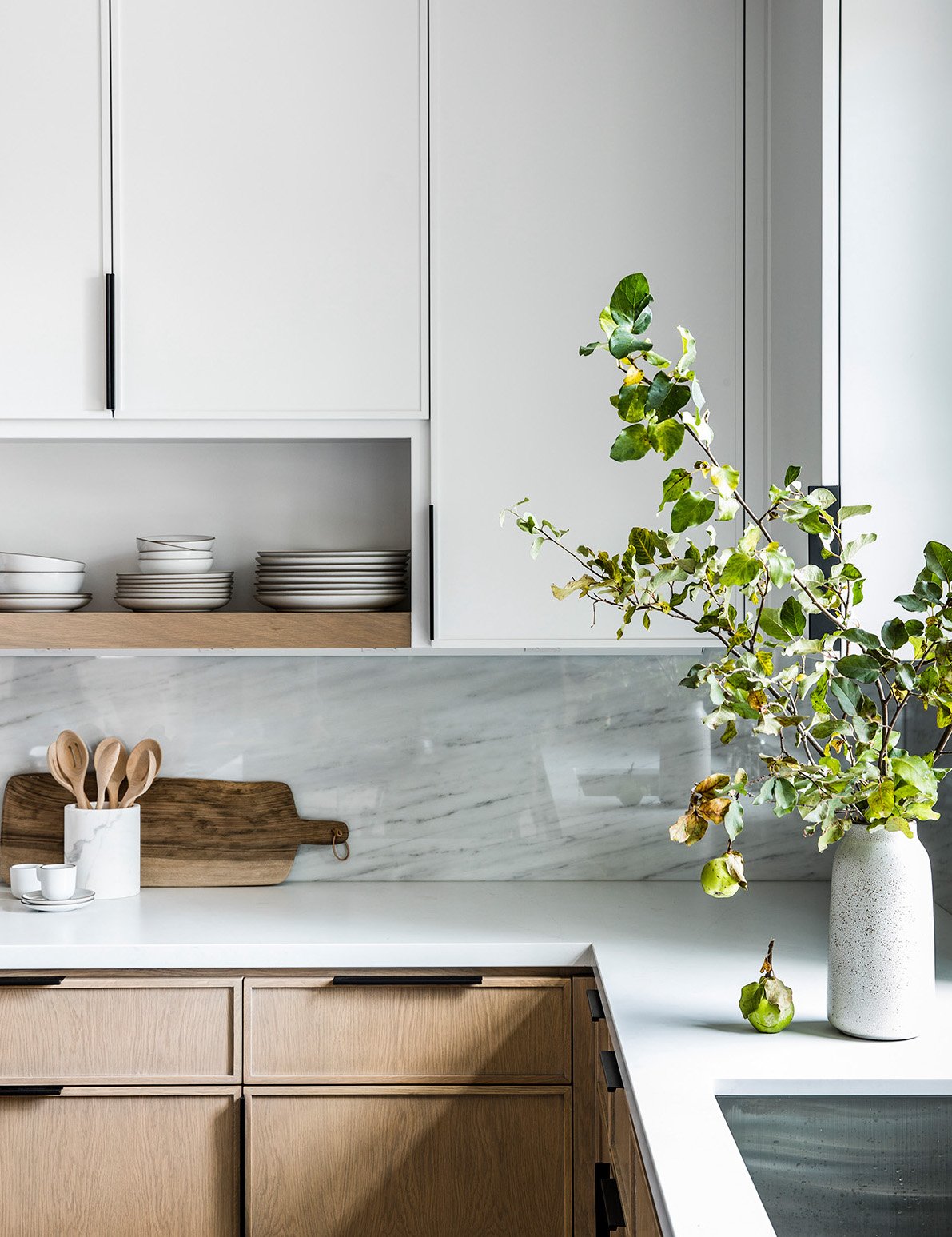The Best Cabinet Styles to Consider for your Kitchen Remodel
Cabinetry is one of the biggest investments when you’re remodeling your kitchen or building from the ground up. New cabinets can completely change the look, layout and overall functionality of your kitchen. The style that you choose here often weaves itself into the design in the rest of your house. So it’s worth it to really think this part of the process through.
It’s best to start with the overall concept you want to achieve throughout the entire space. Is your house Mid-Century Modern? Modern Farmhouse? Traditional? This informs where you’ll end up going with the cabinets.
Here are some of my favorite, timeless cabinet styles to consider:
1. Overlay Panels vs Inset Panels
This is more of a preface to cabinet styles, as it has more to do with the structure of the cabinets. There are a couple ways of constructing the doors, once being Overlay and the other Inset.
With both of Overlay and Inset construction types, you can select the same options for the door and drawer styles. For example, for inset doors, you can pick between Shaker Style or Paneled Style. So it’s a great way to mix and match styles throughout your home, and to select where you’d like a more custom look.
Overlay Panels
Overlay Panels refers to when the cabinet or drawer completely covers the face frame. Since they aren’t inset into the frame, they offer the most amount of space for storage, and are the easiest to install. There’s a bit more flexibility in the adjustments for the doors, so your cabinetmaker won’t need to spend as much time getting the alignment just right. Just something to note, there are options to select full overlay, where you can’t see any of the frame at all, and then partial overlay, where you can see a bit of the frame behind the face panels. I usually prefer the full overlay because it looks more custom, as you can see in the photo below, designed by Lauren Nelson Design.
Design by Lauren Nelson Design for their Sunset Idea House
Inset Panels
Inset Panels refers to when the door or drawer face is set back to be flush with the face frame. So when closed, the face of the cabinet is flat against the frame around it. This means you’ll need pulls or knobs to open the cabinets. While you’re considering the door hardware, you’ll notice that in the image below, the hinges are exposed. While you don’t always have to leave the hinges visible, this is such a pretty detail when done right. But it does mean that you’re paying a little more for the hardware since it’s so front and center, and you’ll have to make sure that the pull hardware is in a similar style.
This style is typically more expensive than overlay panels, as it requires your millworker to be pretty exact with their measurements and cuts. They also require more detailed work to adjust the hinges and drawer glides, meaning more labor cost overall. But it does give a really custom look to your cabinets, and the hardware can add such a beautiful detail to your kitchen.
This kitchen designed by Design and That shows how you can expose the hinge for some doors, and then leave others concealed to keep a streamlined look.
Design by Design and That for their Victoria Park II project.
2. Classic Shaker Panels
Honestly, you can’t go wrong with Shaker Cabinets. It’s a timeless classic, that you can dress up or dress down to best suit your needs. Odds are that you already know exactly what this is, but just to refresh your memory - Shaker cabinets are a raised panel design, with the panel having square inside and outside edges. It’s simple, it’s clean, and it’s usually the most affordable of the options by your cabinet maker.
I love pairing this classic style, with a bit more unexpected hardware to add a custom look, like this kitchen line by Nordiska Kok. They create beautiful, custom cabinetry in Gothenburg, Sweden.
The Nordic Kitchen line by Nordiska Kok in their Copenhagen project.
3. Glass Front
While you might not want them everywhere, Glass front cabinets are a nice way to break up an otherwise long run of cabinets. They help to brighten a dark kitchen with the reflection, and it’s a perfect chance to display some of the ceramics you’ve been collecting.
They’re not a lot more expensive than a regular wood cabinets, but they do require a bit more work at the shop. If you can, spring for Low Iron glass, as normal glass has a bit of a blue/green tint to it. Also, make sure that they’re using high quality glass, so that there’s no issues with safety or durability.
Kitchen Designed by Katie LeClerq via Architectural Digest.
4. Beaded or Paneled
This is one of my favorite cabinet styles right now. With a wider, flatter vertical panels, it can create a modern Scandi look, or if you go with narrower panels, it can be very charming and traditional.
I love the clean, minimal and modern look of in this kitchen by Elizabeth Roberts for her personal home. Note the clean hardware and the perfect alignment of the vertical panels.
Designed by Elizabeth Roberts Architects for their Cobble Hill Townhouse
5. Flat Panels
Flat Panel cabinets are literally that - just flat. It’s commonly thought of as from the 1950s, but it’s more often used in European and modern designs.
I love flat panels as a great way to experiment with integrated pulls to add interest, and is especially great for stained wood application,s like this walnut cabinetry from Heidi Cailier Design.
Design by Heidi Cailier for her Sunset Hill project.
To Stain or to Paint?
Why not both? This project designed by Smith Hanes Studio makes the case to both stain and paint the cabinets. It creates a beautiful aesthetic mix of both refined and earthy, with just a bit of edge. I also think that the painted drawers are a bit more durable than the walnut stain, and allows for easy touch ups on areas that get a lot of use.
Design by Smith Hanes Studio. Photo by Andrew Thomas Lee via Remodelista.







